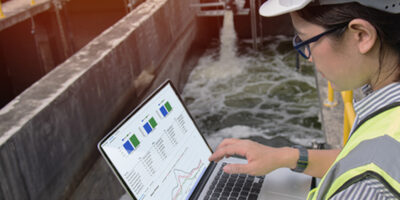Stormwater ingress to a city’s sewer system through low gully traps, illegal connections, broken pipes or unsealed manholes is known as Inflow and Infiltration (I&I). This can cause overflows, system strains and interruptions.
What is Inflow & Infiltration? Inflow: Stormwater that enters the wastewater network directly through gully traps, roofs or illegal connections. Infiltration: Stormwater or groundwater that enters the wastewater network through cracked pipes and leaky or faulty manholes.
Why bother to fix Inflow & Infiltration?
By identifying I&I early on and reducing their levels, cities can benefit from:
- Reduced localised overflows: Through the management of overflows from manholes during rainfall, controlled overflow points, pump stations and treatment plants
- Improved operational efficiencies: I&I reduces the sewer network capacity, limiting the potential for growth within a specific catchment
- Reduced ongoing costs: I&I results in clear water being pumped and treated along with wastewater, contributing to increased costs
How to identify whether you have an Inflow & Infiltration problem?
Councils and water authorities can identify whether they have existing I&I issues within their network by looking for these clues:
- Pumps run for hours and inflows increase significantly during storm events
- The hydraulic loading of wastewater treatment plants increases significantly after a rain event
- Localised overflows within the collection system network during heavy storm events
- An increase in inflow during dry weather conditions compared to previous months
Steps to reduce Inflow & Infiltration within the wastewater network
The following steps provide a simple overview of an I&I reduction plan that can assist in identifying the various stages associated with reducing I&I within the wastewater network:
Step 1: Targeted monitoring – monitoring WW flows within the network
Step 2: Identifying the problem – is it Inflow or Infiltration?
Step 3: Source detection – where are they occurring?
Step 4: Rehabilitation – what can be done?
As outlined above, the first step is to identify the general vicinity of the issue through flow monitoring. The next steps are to identify the exact problem, locate the areas where they are occurring and introduce steps to improve the situation.
Source detection
There are a few ways to locate the sources of I&I. These include:
Private property inspections
The inspection of private properties consists of visual assessments of the stormwater and wastewater networks within a property. Illegal connections could mean that a stormwater down pipe is directly connected to a wastewater gully trap.
Manhole inspection
Manhole inspections can identify leaks from broken benches and joints due to tree root intrusion or design issues. Manholes can contribute to significant I&I through leaky covers as well.
Smoke testing
Smoke testing locates inflow and infiltration sources by identifying stormwater drain cross connections, broken pipes and lateral and unsealed manholes.
Dye testing
Dye testing can be used to identify leaks and confirm smoke testing results. The method uses water mixed with a non-toxic dye. The coloured water is pumped through the ground and stormwater system and appears in the sanitary sewer collection system where leaks or illegal connections occur.
CCTV
The use of CCTV allows authorities to visualise the inside of pipes by using a small camera that travels down the length of a pipe to produce a visual representation of its condition. CCTV inspections can reveal the need for rehabilitating leaky pipes or broken lateral connections.
Rehabilitation
Rehabilitation can include, but is not limited to the following:
- Sealing manholes and replacing leaky covers
- Using cured-in-place piping (CIPP), trenchless rehabilitation or chemical grouting to seal up leaks and open cut replacement of pipes
- Raising gully traps and disconnecting stormwater downpipes from the gully trap and redirecting it into the stormwater network
- Fixing broken laterals (relining or replacing) and any other private connections
Alternative solutions
There are other tools in the market that could assist in identifying areas with potential inflow and infiltration issues, tracking reduction over time and providing an economic analysis of potential solutions and options. Examples of such solutions include:
- Future City Flow: FCF is a decision support system for long- and short-term planning. It integrates data sources from various platforms and runs predictive modelling to identify sources of I&I and operational faults within the network. The system can assist in reducing discharge of untreated wastewater, localised overflows and wastewater treatment costs.
- DHI’s Flow Derivation tool: A flow monitoring campaign can be an expensive task to undertake. Therefore, the flow derivation tool uses an algorithm than can predict and calculate inflow & outflow records at each pump station, meaning that councils can potentially use pump stations as monitoring points to identify catchments with high I&I levels.
Link up with us to know more.








